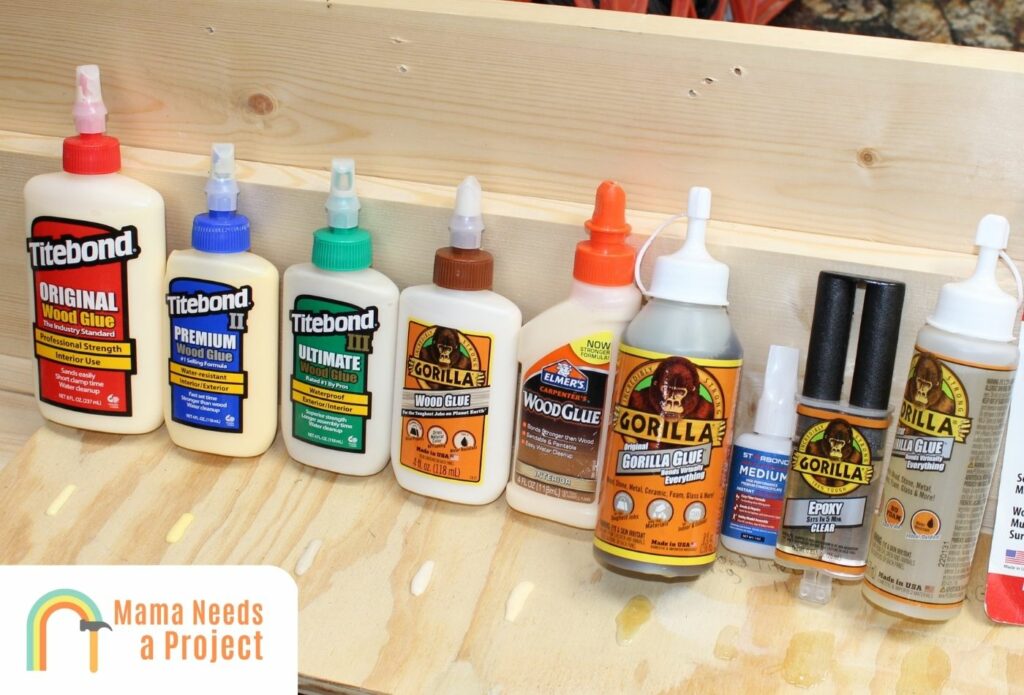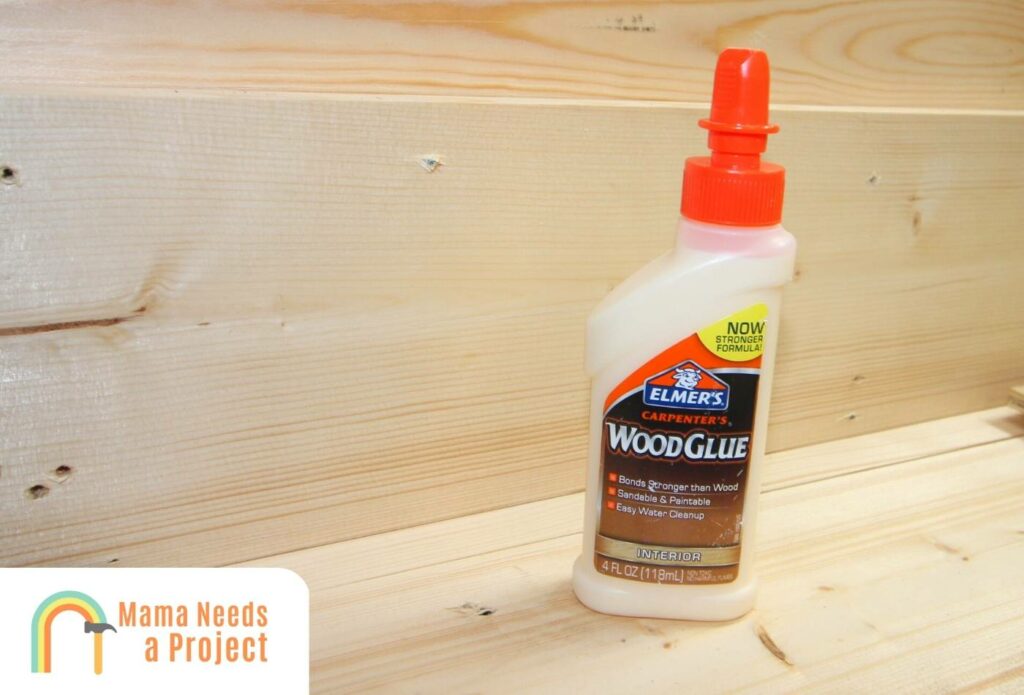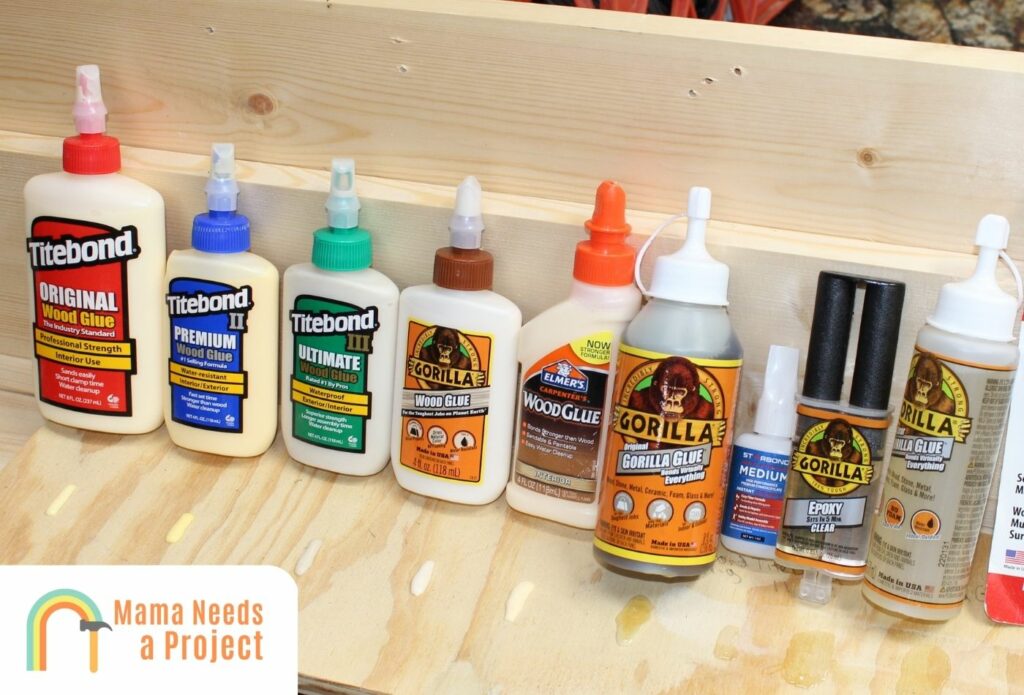So you’re planning a woodworking project and you’ve got your trusty Elmer’s wood glue ready to go. But now you’re wondering, how long does it take for Elmer’s wood glue to dry? Well, you’ve come to the right place to find out!
When it comes to Elmer’s wood glue, the drying time can vary depending on a few factors. The type of wood you’re working with, the humidity in the air, and the amount of glue you’ve applied all play a role in how long it takes for the glue to fully dry.
But don’t worry, I’ve got all the answers you need. In this article, we’ll explore the factors that can affect the drying time of Elmer’s wood glue and give you some tips to ensure your project turns out perfectly. So let’s dive in and find out how long it really takes for Elmer’s wood glue to dry!

How Long Does It Take for Elmer’s Wood Glue to Dry?
When it comes to woodworking and crafting, Elmer’s wood glue is a popular choice for its strength and reliability. But one of the most common questions people have is how long it takes for Elmer’s wood glue to dry. The drying time can vary depending on various factors, so it’s important to understand the process and factors that can affect it. In this article, we’ll explore the different factors that affect drying time and provide some tips to ensure optimal results.
Factors Affecting Drying Time
The drying time of Elmer’s wood glue can be influenced by several factors. The first and most significant factor is the type of Elmer’s wood glue you are using. Elmer’s offers a variety of wood glues, including their original wood glue, which has a drying time of 24 hours, and their Max wood glue, which dries in just 10 minutes.
Another factor that can affect drying time is the temperature and humidity levels in your workspace. Higher temperatures and lower humidity levels tend to speed up the drying process, while lower temperatures and higher humidity levels can prolong drying time. It’s essential to work in a well-ventilated area and consider the environmental conditions when using Elmer’s wood glue.
Additionally, the thickness and amount of glue applied can impact drying time. Thicker layers of glue and larger amounts take longer to dry compared to thinner layers. It’s important to apply an even and appropriate amount of glue to ensure optimal drying time.
Tips for Faster Drying
If you’re working on a project with Elmer’s wood glue and need it to dry quickly, here are some tips to help speed up the drying process:
- Apply a thin layer of glue: Thinner layers of glue dry faster, so make sure to spread a thin and even coat of Elmer’s wood glue on your project.
- Use a fan or heat source: Increasing air circulation around the glued area can help accelerate drying. Place a fan near the project or use a heat source, such as a hairdryer on the lowest heat setting, to speed up the process.
- Control the temperature and humidity: If possible, work in a room with controlled temperature and humidity levels. Lowering the humidity and increasing the temperature can significantly reduce drying time.
Comparing Elmer’s Wood Glue Variants
Elmer’s offers various wood glue variants, each with different drying times. Here’s a comparison of some popular variants:
| Variant | Drying Time |
|---|---|
| Elmer’s Original Wood Glue | 24 hours |
| Elmer’s Max Wood Glue | 10 minutes |
| Elmer’s Carpenter’s Wood Glue | 12-24 hours |
It’s important to choose the right variant based on your project’s requirements and the desired drying time. Consider the specific application and timeframe to ensure you select the most suitable Elmer’s wood glue variant.
Tips for Optimal Results with Elmer’s Wood Glue
When using Elmer’s wood glue, following these tips can help you achieve the best results:
Ensure Proper Surface Preparation
Before applying Elmer’s wood glue, make sure to properly prepare the surfaces you intend to glue. This includes ensuring they are clean, dry, and free from any dust, dirt, or other contaminants that may hinder the glue’s effectiveness. Smooth surfaces also provide better bonding, so sanding rough areas may be necessary prior to gluing.
Apply Clamping Pressure
To maximize bonding strength, apply clamping pressure after applying the glue. This helps ensure a strong bond by keeping the surfaces in firm contact while the glue dries. Select appropriate clamps for your project and apply sufficient pressure without damaging the project.
Allow Sufficient Drying Time
While it can be tempting to rush through the drying process, it’s important to allow sufficient drying time for Elmer’s wood glue to ensure a strong bond. Follow the recommended drying time provided by the specific variant of Elmer’s wood glue you are using.
Storing Elmer’s Wood Glue
Proper storage of Elmer’s wood glue can prolong its shelf life and maintain its effectiveness. Here are some tips for storing Elmer’s wood glue:
Keep the Cap Tightly Closed
After every use, make sure to tightly close the cap of the wood glue bottle. This helps prevent air from entering and keeps the glue from drying out prematurely.
Store in a Cool and Dry Place
It’s important to store Elmer’s wood glue in a cool and dry place away from direct sunlight and extreme temperatures. This helps maintain the glue’s consistency and prevents it from deteriorating rapidly.
Check the Expiry Date
Before using Elmer’s wood glue, always check the expiry date. Expired glue may not provide the desired bond strength and can compromise the quality of your project.
By following these storage tips, you can ensure that your Elmer’s wood glue stays fresh and effective for future projects.
Summary
Elmer’s wood glue offers reliable bonding for woodworking and crafting projects. The drying time of Elmer’s wood glue can vary based on factors such as the type of glue, temperature, humidity, and application thickness. By understanding these factors and following the recommended guidelines, you can achieve optimal results with Elmer’s wood glue. Remember to choose the right variant based on your project’s requirements, prepare the surfaces properly, apply clamping pressure, and allow sufficient drying time. Additionally, proper storage of Elmer’s wood glue is crucial to maintain its effectiveness and longevity. Following the tips provided in this article will help you make the most of Elmer’s wood glue and ensure successful projects every time.
Key Takeaways – How Long Does It Take for Elmer’s Wood Glue to Dry?
- Elmer’s wood glue takes about 24 hours to fully dry.
- However, it will start to set within 30 minutes to an hour.
- For best results, let the glued wood piece sit undisturbed for at least 24 hours.
- Keep in mind that drying times may vary depending on temperature and humidity levels.
- Always follow the instructions on the bottle for specific drying times.
Frequently Asked Questions
Welcome to our comprehensive guide on Elmer’s Wood Glue! If you’ve ever wondered how long it takes for Elmer’s Wood Glue to dry, you’ve come to the right place. We’ll answer all your questions about drying time, enabling you to tackle your woodworking projects with confidence. Read on to find out more!
How long does it usually take for Elmer’s Wood Glue to dry?
The drying time for Elmer’s Wood Glue can vary depending on several factors. In general, it typically takes about 24 hours for the glue to fully dry and cure. However, it’s important to note that drying times can be influenced by factors such as temperature, humidity, and the thickness of the glue application. Cooler temperatures and higher humidity levels can extend the drying time, while warmer temperatures and lower humidity levels can expedite it.
To ensure the best results, it’s recommended to leave your glued wood project undisturbed for at least 24 hours. This will give the glue enough time to dry and achieve maximum strength. It’s important not to rush the process by attempting to handle or put stress on the glued joints before they have fully cured.
Are there any tips for speeding up the drying time of Elmer’s Wood Glue?
If you’re in a hurry and need to speed up the drying time of Elmer’s Wood Glue, there are a few things that you can do. Firstly, you can try using a hairdryer set on low heat to gently blow warm air onto the glued area. This can help accelerate the drying process, but be cautious not to overheat the glue, as it may affect its bonding strength.
Another tip is to ensure proper ventilation in the drying area. Good air circulation can facilitate faster drying, so consider using fans or opening windows to increase airflow. If you’re working on smaller projects, you can also place them near a dehumidifier to reduce humidity levels and expedite the drying time.
Can I paint or stain wood glued with Elmer’s Wood Glue before it is fully dry?
No, it is not recommended to paint or stain wood glued with Elmer’s Wood Glue before it has fully dried. Paint or stain can interfere with the glue’s drying process and may prevent it from forming a strong bond. It’s important to exercise patience and allow the glue ample time to dry and cure before proceeding with any finishing touches.
To ensure the best results, it’s advisable to wait at least 24 hours after applying the glue before attempting to paint or stain the surface. This will give the glue sufficient time to dry completely, ensuring a strong bond and a smooth, even finish when painting or staining the wood.
Can the drying time of Elmer’s Wood Glue be affected by the type of wood being glued?
Yes, the type of wood being glued can have an impact on the drying time of Elmer’s Wood Glue. Different wood species absorb moisture at different rates, which can affect the overall drying time. For example, softer woods tend to absorb moisture more quickly, which may prolong the drying process. Conversely, denser hardwoods may dry faster due to their lower moisture absorption.
It’s also important to consider the condition of the wood. If the wood is freshly cut or has a high moisture content, it may take longer for the glue to dry properly. In such cases, it’s advisable to allow the wood to acclimate to the surrounding environment and reach a stable moisture level before applying the glue. This can help ensure optimal drying and bonding for your woodworking projects.
Is it possible to speed up the drying time of Elmer’s Wood Glue by applying heat?
While applying heat may help speed up the drying time of Elmer’s Wood Glue, it’s important to exercise caution. Excessive heat can cause the glue to dry too quickly, potentially compromising its bonding strength. It’s crucial to strike the right balance to achieve optimal results.
If you decide to use heat to speed up the drying process, it’s advisable to use a gentle, indirect heat source, such as a hairdryer set on low heat or a heat lamp placed at a safe distance. Be sure to maintain a safe distance from the glued area to avoid overheating. Additionally, monitor the glue and avoid constant heat exposure to prevent any adverse effects on the bond. As always, it’s recommended to follow the manufacturer’s instructions and conduct a test on a small area before applying heat to the entire glued surface.

Summary
So, how long does it take for Elmer’s wood glue to dry? It depends on a few factors. The type of wood and the amount of glue applied can affect drying time. Generally, it takes about 24 hours for the glue to fully dry and cure. However, it’s always a good idea to leave it untouched for a bit longer to ensure a strong bond. Remember, patience is key when it comes to woodworking projects!
In conclusion, when using Elmer’s wood glue, give it at least 24 hours to dry completely. Be patient and let it cure to ensure a sturdy bond. Now you’re ready to finish up your project and admire your handiwork!
